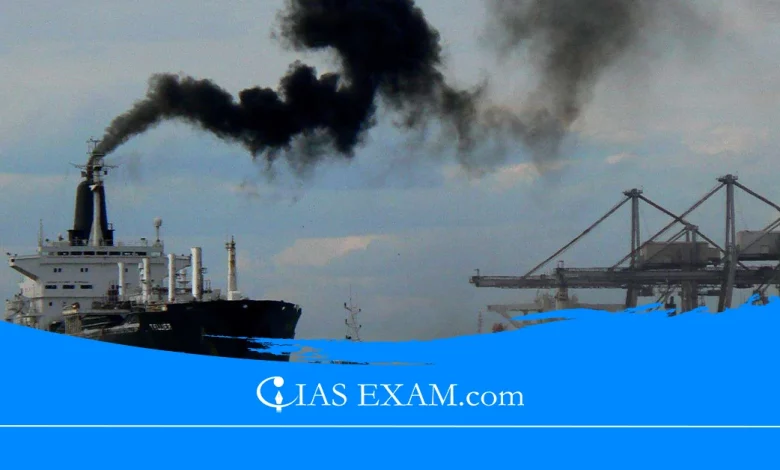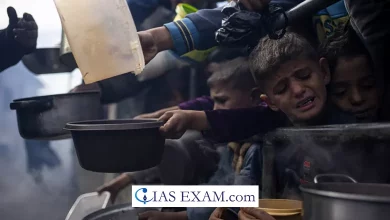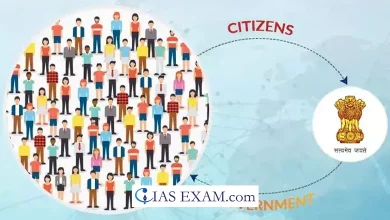
Context
There is constantly growing concern about the black carbon emission in India which needs to be curbed.
About the Black Carbon
- It is a dark sooty material emitted along with other pollutants when biomass and fossil fuels are not fully combusted, contributes to global warming and poses severe risks.
- It is a part of fine particulate air pollution (PM2.5).
- It has been discovered to have a direct link between exposure to black carbon and a higher risk of heart disease, birth complications, and premature death.
Major Sources of Black Carbon
- Most black carbon emissions in India arise from burning biomass, including cow dung or straw, in traditional cookstoves.
- According to a 2016 survey, the residential region contributes 47% of India’s overall black carbon emissions.
- Industries make a contribution a further 22%, diesel motors 17%, open burning 12%, and different sources 2%.
Related Concerns
- Health Risks: Exposure to black carbon has been linked to a higher chance of heart disease, birth complications, and premature death.
- Recent estimates have indicated that more than 6.1 lakh deaths per year from indoor exposure to air pollution.
- Environmental Impact: Black carbon contributes to global warming and poses intense dangers to the environment.
- It absorbs solar energy, warms the environment, and when it falls to earth with precipitation, it darkens the surface of snow and ice, decreasing their albedo (the reflecting strength of a surface), warming the snow, and hastening melting.
- Black carbon deposition on snow contributes up to 39% of general glacier melting and 10% of glacier mass loss because of decreased precipitation as discovered over the Tibetan Plateau.
- It disrupts hydrological cycles over monsoon structures and accelerates regional warming, specifically over the cryosphere.
- It fuels the feedback loop driving Arctic amplification, which has broader consequences disrupting the Indian monsoon.
- Climate Change: Black carbon is the second one biggest contributor to climate change after CO2.
- Unlike CO2, which can stay in the atmosphere for hundreds to thousands of years, black carbon, because it is a particle, remains in the atmosphere only for days to weeks before it returns to earth with rain or snow.
- Air Quality: Black carbon influences air quality, visibility, and harms ecosystems. It also reduces agricultural productivity.
- Socio-Economic Impact: The health and environmental effects of black carbon will have vast socio-financial implications, including elevated healthcare expenses and decreased agricultural yields.
Government Initiatives to Curb Black Carbon
- Pradhan Mantri Ujjwala Yojana (PMUY): It provides free liquefied petroleum gas (LPG) connections to households under the poverty line.
- The primary goal of PMUY is to make easy cooking gas available to rural and poor households and reduce their dependence on conventional cooking fuels.
- It has as a consequence been able to play an essential function in decreasing black carbon emissions, as it offers a cleanser alternative to traditional fuel consumption.
- Introduction of Cleaner/Alternate Fuels: The government has added cleaner/trade fuels like gaseous fuel (CNG, LPG and etc.), ethanol blending.
- Sustainable Alternative Towards Affordable Transportation (SATAT): It has been released to set up 5000 Compressed Biogas (CBG) production plants and make CBG to be used in the market.
- Promotion of Agricultural Mechanization: It is the Central Sector Scheme on ‘Promotion of Agricultural Mechanization for in-situ management of Crop Residue in the States of Punjab, Haryana, Uttar Pradesh and NCT of Delhi’, agricultural systems and gadget for in-situ crop residue control are promoted with 50% subsidy to the person farmers and 80% subsidy for the establishment of Custom Hiring Centres.
- National Clean Air Programme: The Central Government is imposing the National Clean Air Programme as a long-term, time-bound, national-level strategy to tackle the air pollution problem across the country in a comprehensive manner with targets to achieve 40% reduction in particulate matter concentrations by 2025-26.
- Faster Adoption and Manufacturing of Electric Vehicles (FAME): FAME phase-2 scheme has been rolled out to promote the adoption of electrical and hybrid vehicles in the country.
Way Forward
- Curbing black carbon emissions in India requires a multi-pronged approach that includes promoting clean cooking fuels, enhancing business procedures, and improving public consciousness about the dangerous consequences of black carbon.
- One potential solution to this difficulty is the local production of compressed biomethane (CBM) fuel with the aid of composting biomass. CBM is a much purifier gasoline with lower black-carbon emissions and funding.
- Panchayats can take the initiative to supply CBM gas locally at the village level, ensuring every rural household can get access to clean cooking fuel.
- India pledged to obtain net-zero emissions by 2070 on the COP26 in Glasgow, positioning itself as a pacesetter within the race to carbon neutrality.
Source: The Hindu
UPSC Mains Practice Question
Q.What do you understand by Black Carbon? Discuss its impacts on the environment. (150 Words)





.png)



